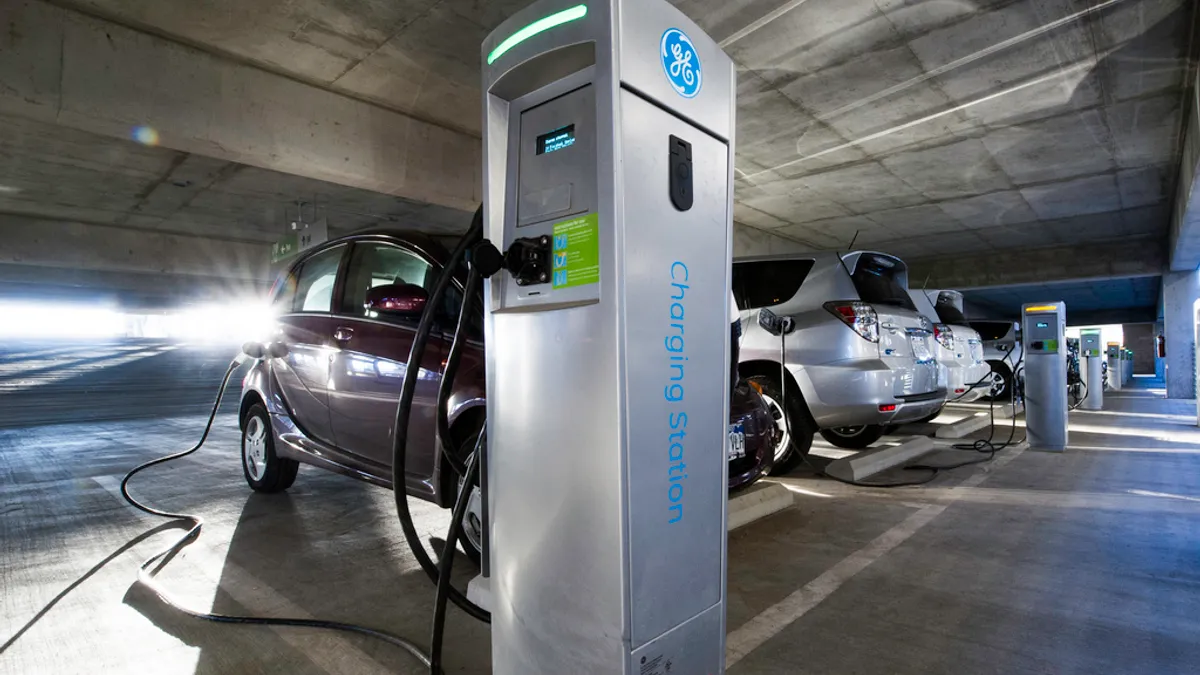Dive Brief:
- Electric vehicle charging stations around the globe will number almost 13 million by the end of 2020, a fast ramp up from the 1 million available last year, according to research from IHS.
- The firm expects the global market for both pure electric and plug-in hybrid electric vehicles will grow significantly over the next five years, but said that charging infrastructure will be key to widespread adoption.
- According to the IHS report, about 10% of EV charging stations will be public by 2020, although they will lean heavily towards less-expensive and slower AC charging technology.
Dive Insight:
Charging infrastructure has long been identified as key to widespread adoption of electric vehicles, and new research from IHS finds the expansion is underway. By 2020 the firm expects more than 12.7 million stations around the world, though the bulk of them will be in residences.
"Deployments of EV charging stations are critical to enable a widespread adoption of electric plug-in vehicles,” Ben Scott, senior analyst at IHS Automotive, said in a statement. “Most charging stations are expected to be installed in domestic applications, such as a dedicated wall box or simply a charging cord plugged into a household power source."
That could mean a big business opportunity for utilities that move quickly into the charging space. Electric vehicles not only provide power companies with a new source of electricity demand, but utilities could also hypothetically use thousands of car batteries connected to the grid to manage demand during peak hours. At a recent utility industry conference, Tesla CEO Elon Musk predicted that electric demand could double or more as a result of increased EV adoption.
Of the two main types of charging stations, AC charging is expected to be the more prevalent because of the higher costs of DC charging, which supplies current directly to the vehicle battery. An AC charger will add up to 15 miles of range for a 30 minute charge; a DC charger, however, will add up to 80 miles in the same time.
“AC charging stations are the dominant type of plug-in vehicle charging type, and we expect AC charging to retain its position long-term,” said Scott. “AC charging is also an inexpensive and convenient way of charging requiring much smaller upgrades of the electricity grid, whereas DC charging is best suited for ‘en route’ charging.”
Charging station deployments range greatly in price, IHS noted, from $395 USD for a residential system to more than $35,000 for a DC charging station, not including installation costs that could add $10,000 depending on location and accessibility.
Japan and Europe lead the infrastructure expansion globally; in Europe the report finds the Netherlands, the United Kingdom and Norway currently have the most stations. “We recognize the potential of Germany and France,” said Scott. “They are the ‘sleeping giants’ of e-mobility, but their EV charging station networks are currently underdeveloped with respect to the size of those countries.”














